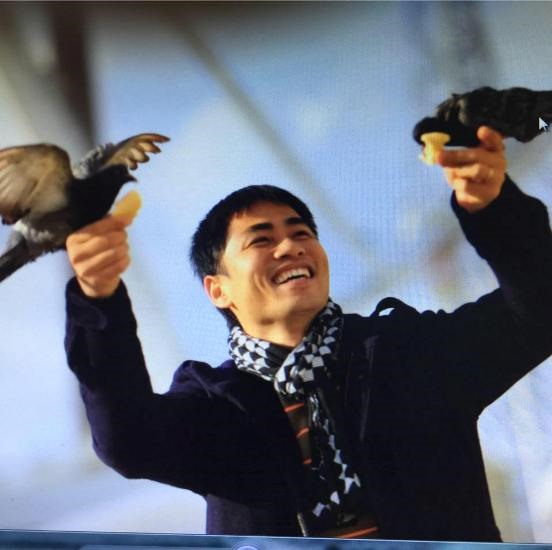 Life & Style
Life & Style

A documentary entitled Hai Đứa Trẻ (Two Children) has been viewed nearly 2 million times since it was posted two weeks ago on Việt Nam Television’s (VTV) Facebook page
 |
A documentary entitled Hai Đứa Trẻ (Two Children) has been viewed nearly 2 million times since it was posted two weeks ago on Việt Nam Television’s (VTV) Facebook page. It was also aired on VTV twice.
The film, directed by Tạ Quỳnh Tư, is based on a real story of two families in the southern province of Bình Phước. Khiên suspects that the three-year-old daughter he and his wife are raising is not their biological child because she looks quite different from them. The documentary follows Khiên’s journey to look for his own daughter who is found living with an ethnic S’tieng family.
Tư, 37 graduated from Hà Nội Theatre and Cinema College. He is currently working at VTV’s Documentary and Reportage Centre. He has been involved in filmmaking for the past five years.
Culture Vulture interviewed Tư about the documentary.
Nearly 2 million views in two weeks. Did you imagine such a response?
I am shocked when I read the comments and feedback. I didn’t have any idea how a social network impacts society. It’s really powerful. Many viewers want to help the ethnic child continue in preschool. It is highly appreciated.
I just wanted to share the pain and the loss of the parents whose children were switched. I also worry about the children’s future. I want health care workers to know what they caused the families.
Do you think about the success of the documentary?
I’m happy because my work is warmly received. I’m moved when I receive congratulatory messages from my friends and my colleages. However, I did not dare think about success because I just wanted to make the film and I did.
How did you find out about the story?
It was by chance. I have a friend working at the online newspaper VnExpress. He said that he received a phone call about the story from people who wanted to bring the story and the related controversy to public attention. The families have yet to resolve the problems with the hospital where the two children were born and switched, and the tensions between themselves. I was interested in the story. I went to meet the two families and told them that I wanted to make a documentary.
What difficulties did you face when making the documentary?
I spent a few days getting acquainted with Khiên’s family, playing with his kids, to convince them. I also told them my purpose and explained how it will be meaningful. After Khiên’s family agreed to be filmed, I went to meet Liên’s family in Sóc Village with Khiên’s support and the head of the village. They are ethnic people and Khiên met Liên and her family to talk about me because I’m the first reporter visiting them.
Do you think you are lucky to have made the documentary?
I began to make films five years ago. I think I’m lucky because I can make documentaries with people who I’m interested in and follow them. I just link the stories, turn them into images and transmit to audiences.
I learned filming at the college. It helps me a lot in making films. I think image is very important to feature characters’ emotions. Sometimes they cannot express their innermost feelings. In that case, images of their expressions, such as looking down or tears running down cheeks, are very strong. However, it is not easy to catch such precious moments.
Could you tell how the children are at present?
The children were exchanged five months ago. But this is not a long time and it is not easy for the children to adapt themselves to their new families.
By the way I want to thank two women who gave financial aid to the children. One is a Hà Nội-based businesswoman name Hoài. She went to Sóc Village to give VNĐ10 million (US$440) to Khiên’s family to help him raise his daughter because she is suffering from malnutrition. And she will also cover preschool and school fees for the child until she is 18 years old.
Another woman, named Yến, lives and works for a non-govermental organisation in Canada. She was the first person to call me saying that she wanted to help the ethnic child. Yến wants a third party to manage the money and report developments. And we have not found a third party to support the family with donations and send regular reports to the sponsor. — VNS




